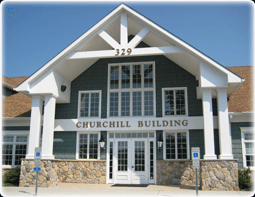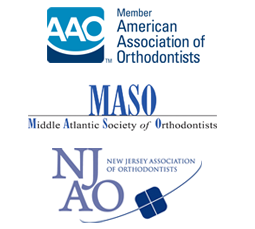Dental Update
Call Giegerich Orthodontics at 609.652.1900 or fill out our online Request an Appointment form to schedule a complimentary consultation with us.
Causes, Symptoms And Treatments For Malocclusion
Malocclusion is defined by Merriam-Webster as abnormality in the coming together of teeth. In other words, malocclusion means having a poor bite or crooked teeth. While this is certainly a cosmetic problem, malocclusion can also lead to problems with eating, speaking, tooth decay or even tooth loss.
Orthodontic treatment can help correct the alignment of the jaws and teeth.
Causes
Malocclusion is caused by problems with the size or shape of the teeth or jaw. Usually it is rooted in the jaw, either having too much room or too little room. If the jaw is too small, the teeth grow in crooked or crowded; if there is too much room, the teeth may grow in with spaces or grow out of place.
Other common causes for malocclusion are pacifier use, thumb-sucking and tooth loss.
Symptoms
The most obvious symptom of malocclusion is the appearance of the teeth: they are either crooked or stick out. Another symptom is when the upper front teeth are pushed forward, which is called buckteeth or overjet. Lower front teeth sitting farther back than the upper front teeth, called underbite, is also a symptom.
Treatment
Once an orthodontist sees a sign of malocclusion, he/she will do a preliminary examination of your teeth by asking questions about your health history. An X-ray is also taken of the teeth and face along with a plaster model of the teeth.
A recommended malocclusion treatment for children is growth modification. Growth modification is very effective during a child's growth spurt. This treatment involves the child wearing a device that will help move the jaw to a better position.
Braces are a common treatment, usually following growth modification. The continuous pressure applied by the braces moves the teeth to correct the bite. Braces are very effective for children or teens when correcting teeth and jaws. But for adults, braces are effective only for teeth, and adult jaw problems can be corrected only through surgery.
After braces, retainers are recommended to ensure that teeth will not drift out of place once the braces are removed.
Archive
- 2013-03-21
- 2013-04-21
- 2013-05-21
- 2013-06-21
- 2013-07-21
- 2013-08-21
- 2013-09-21
- 2013-10-21
- 2013-11-21
- 2013-12-21
- 2014-01-21
- 2014-02-21
- 2014-03-21
- 2014-04-21
- 2014-05-21
- 2014-06-21
- 2014-07-21
- 2014-08-21
- 2014-09-21
- 2014-10-21
- 2014-11-21
- 2014-12-21
- 2015-01-21
- 2015-02-21
- 2015-03-21
- 2015-04-21
- 2015-05-21
- 2015-06-21
- 2015-07-21
- 2015-08-21
- 2015-09-21
- 2015-10-21
- 2015-11-21
- 2015-12-21
- 2016-01-21
- 2016-02-21
- 2016-03-21
- 2016-04-21
- 2016-05-21
- 2016-06-21
- 2016-07-21
- 2016-08-21
- 2016-09-21
- 2016-10-21
- 2016-11-21
- 2016-12-21
- 2017-01-21
- 2017-02-21
- 2017-03-21
- 2017-04-21
- 2017-05-21
- 2017-06-21
- 2017-07-21
- 2017-08-21
- 2017-09-21
- 2017-10-21

















